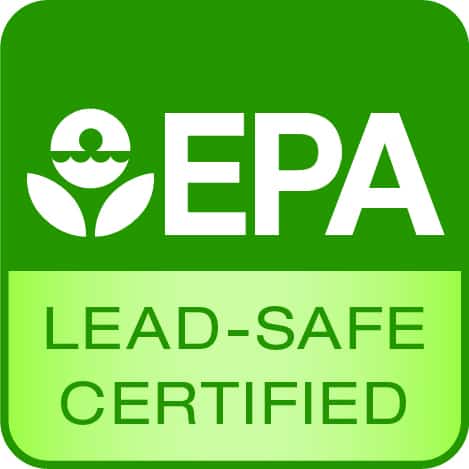When it comes to maintaining your home, painting exterior walls is one of the most critical tasks. Over time, even the best painting projects will show signs of wear and tear, signaling that it might be time for a refresh. Painting exterior walls doesn’t just enhance curb appeal—it also helps protect your home from the elements, ensuring its long-term health and beauty. But how do you know when it’s time for painting exterior walls?
In this blog, we’ll explore five clear signs indicating it might be time to consider painting exterior walls to keep your home fresh and well-protected.
Key Takeaways:
- Faded paint means the UV protection is breaking down and it’s time for painting exterior walls.
- Peeling or cracking exposes your home to moisture, making painting exterior walls a priority.
- Chalking is a sign that the paint’s protective properties are wearing thin.
- Moisture stains and mildew indicate your walls need attention, and painting exterior walls can help.
- Bubbling paint suggests trapped moisture and needs immediate repairs before painting exterior walls.
A Common Homeowner Dilemma
You might find yourself pulling up to your home one day and noticing that it no longer has the vibrant, welcoming exterior it once did. Maybe the paint is peeling, or the color has faded. It’s common for homeowners to delay painting exterior walls, but the longer you wait, the more exposed your home becomes to potential damage. If you’re seeing some deterioration, it may be time to take action by painting exterior walls before the problems worsen.
Look at the top five signs that your home is due for refreshment.
1. Faded Paint
Fading is one of the most obvious signs that it’s time to consider painting exterior walls. Exposure to UV rays from the sun can cause even high-quality paint to lose its vibrancy. Faded paint not only diminishes your home’s aesthetic but also means the paint’s protective properties are starting to wear away.
What to look for:
- Colors that have dulled over time, especially on walls exposed to sunlight.
- An uneven appearance where certain sections of the wall are more faded than others.
Why it matters:
Faded paint leaves your walls vulnerable to weather damage and reduces curb appeal. Painting exterior walls after they start to fade will restore your home’s original look and protection.
2. Peeling and Cracking Paint
One of the most evident signs that painting exterior walls is overdue is when you notice peeling or cracking. When paint begins to peel, it exposes the underlying surface to moisture, leading to potential long-term damage.
What to look for:
- Paint that is flaking or peeling off in small pieces.
- Visible cracks in the paint surface, particularly around windows or door frames.
Why it matters:
Peeling and cracking expose the underlying material, making it more susceptible to moisture damage. By painting exterior walls as soon as you notice these signs, you can prevent further structural issues and keep your home in top shape.
3. Chalking
Chalking occurs when a powdery substance forms on the surface of the paint. While not as immediately visible as peeling or cracking, chalking indicates the paint is breaking down. When you notice chalking, it’s time to consider painting exterior walls.
What to look for:
- White, powdery residue when you touch the walls.
- Areas that appear dull or washed out.
Why it matters:
Chalking indicates that the paint is no longer offering complete protection. Painting exterior walls when chalking occurs will restore your home’s defense against the elements.
4. Moisture Stains and Mildew
Moisture stains and mildew growth are signs that your exterior walls may be compromised. When water infiltrates the surface, it can lead to unsightly stains and mold growth. Painting exterior walls can help protect them from further water damage and keep mildew at bay.
What to look for:
- Dark stains or patches on your exterior walls.
- Green or black spots indicate mold or mildew growth.
Why it matters:
Mildew and moisture damage can lead to more severe problems if left untreated. Address these issues early by painting exterior walls to prevent further damage and protect your home from moisture infiltration.
5. Bubbling Paint
Bubbling or blistering paint is a sure sign that moisture is trapped under the surface. This can occur when the walls are not properly prepped before painting or if the paint is applied over a wet surface. If you notice bubbles forming, it’s a signal that painting exterior walls is needed to prevent further damage.
What to look for:
- Raised areas of paint that feel soft or spongy to the touch.
- Blisters or bubbles that indicate moisture is trapped beneath the paint.
Why it matters:
Bubbling paint signals moisture infiltration, which can lead to peeling and cracking. By painting exterior walls promptly, you can prevent this damage from spreading and maintain the integrity of your home’s exterior.
Don’t Hold Out on Painting Exterior Walls!
While some homeowners might be tempted to tackle painting exterior walls themselves, it’s important to remember that professional painters bring expertise, high-quality materials, and proper preparation techniques. Professional painters ensure your home receives a long-lasting paint job that looks great and protects your exterior for years.
At If Walls Could Talk, we specialize in painting exterior walls with precision and care. Our team of professionals knows exactly how to prep surfaces, select suitable paints, and apply them to achieve a flawless finish that will stand up to the elements. Whether your home shows signs of wear or you’re ready for a new look, we’re here to help.
Is your home showing signs of wear? Don’t wait until the damage gets worse. Contact If Walls Could Talk today at (860) 530-2744 for a free estimate on painting exterior walls. Let our expert team restore your home’s beauty and protection with a fresh coat of paint.



